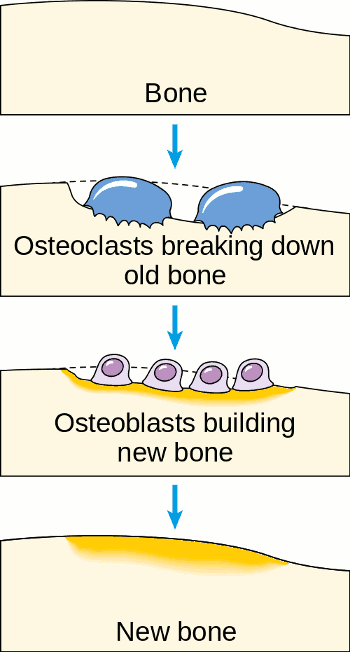Factors influencing bone remodelling
 Bone remodelling – resorption and new bone formation
Bone remodelling – resorption and new bone formation
Bone remodelling is the process by which mature bone is removed via resorption and replaced with new bone. It is a process which continues throughout life. It plays an important role in the healing of fractures and the change in bone density in response to mechanical stress. Various factors influence bone formation and resorption. They are:
Factors increasing bone resorption
- Parathyroid hormone
- Receptor activator of nuclear factor kappa B ligand (RANKL)
- Interleukin 1 (IL-1)
- Tumour necrosis factor-α (TNF-α)
- Thyroid hormone
- Glucocorticoids
Factors decreasing bone resorption
- Osteoprotegerin (OPG)
- Oestrogen / testosterone
- Mechanical loading
Factors increasing bone formation
- Parathyroid hormone
- Thyroid hormone
- Oestrogen / testosterone
- Mechanical loading
Factors decreasing bone formation
- Sclerostin (SOST)
- Interleukin 1 (IL-1)
- Tumour necrosis factor-α (TNF-α)
- Glucocorticoids
Ref: Davidson’s Principles and Practice of Medicine, 22nd Edition, p1062
Image credits: Cancer Research UK via http://commons.wikimedia.org/wiki/File:Diagram_showing_bone_remodelling_Fig_CRUK_112.svg, licensed under the Creative Commons Attribution-Share Alike 4.0 International license.


